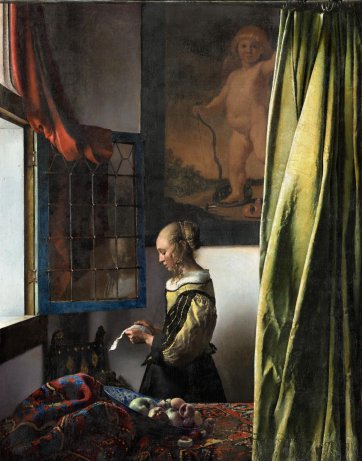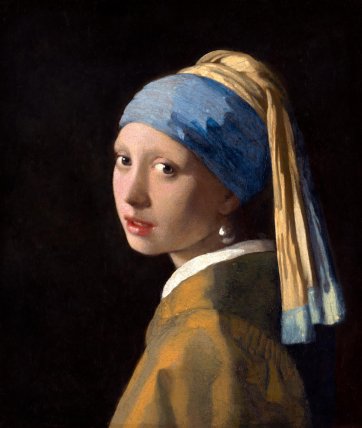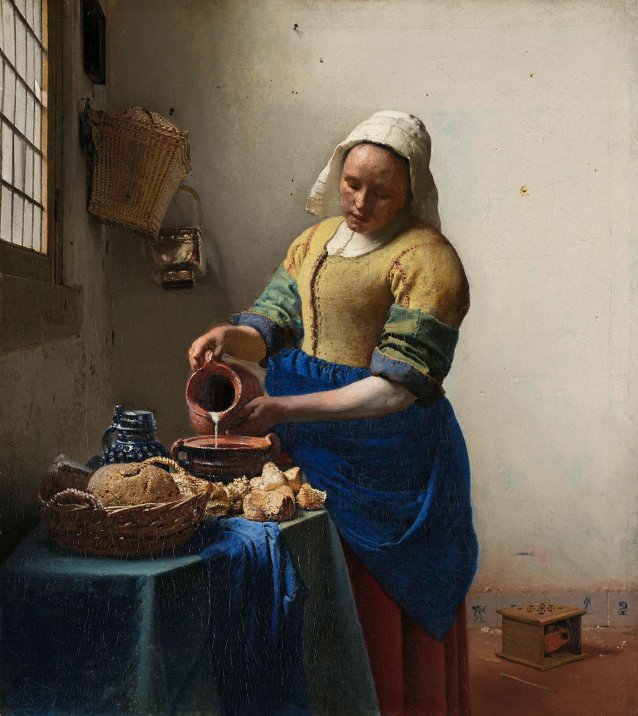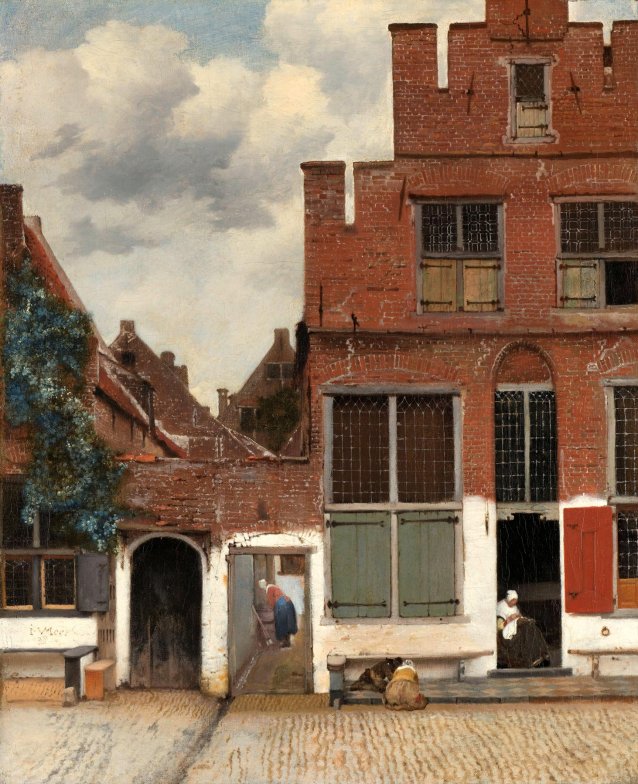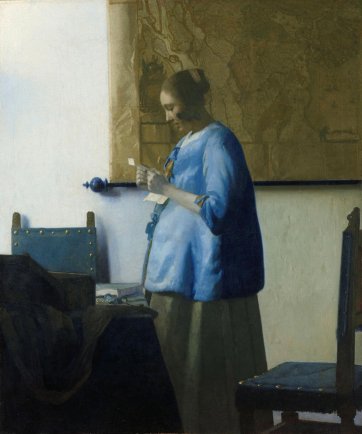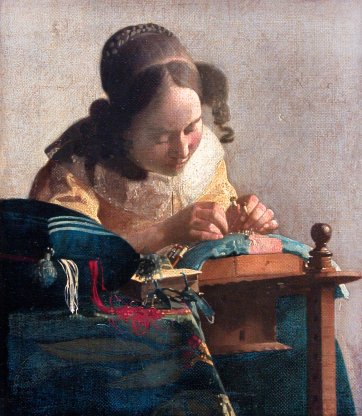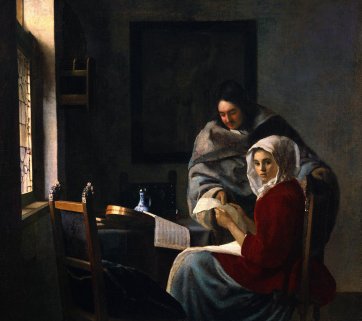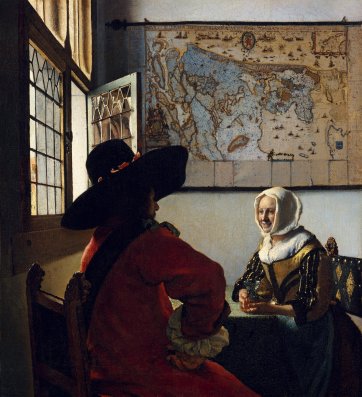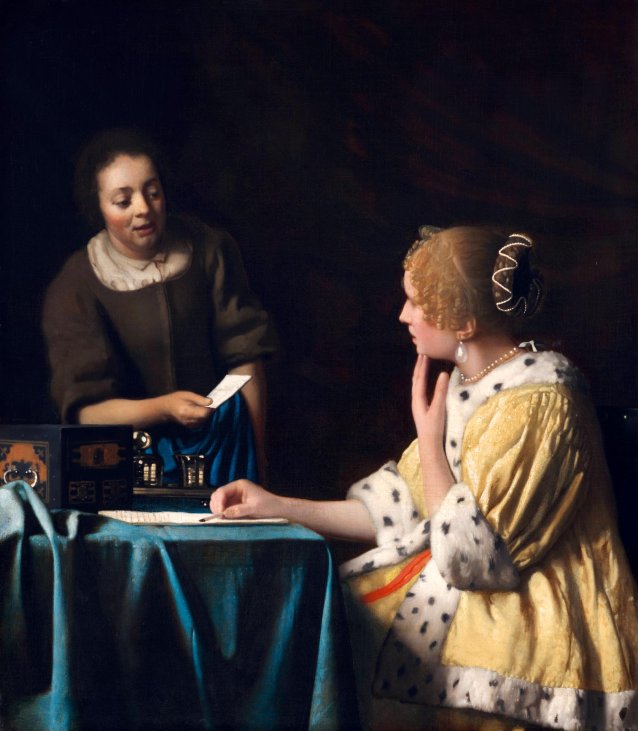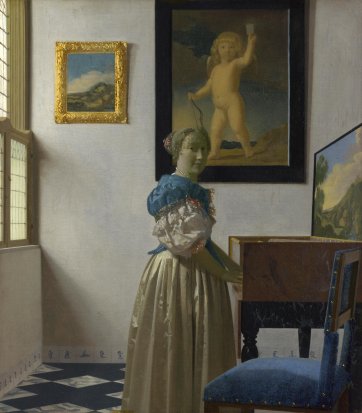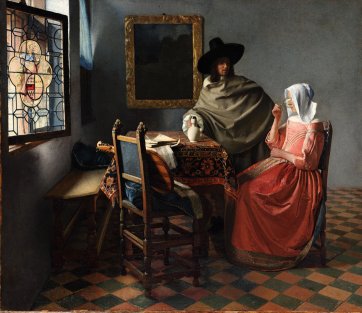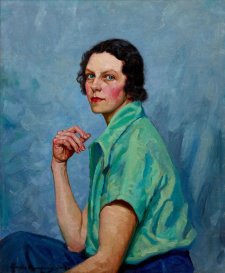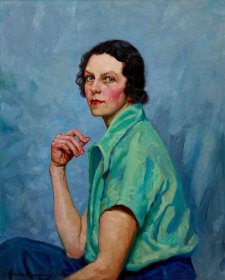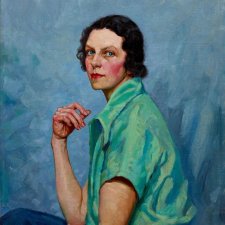Johannes Vermeer is one of the most talented and original Dutch painters of the 17th century. There are only about 37 known works by Vermeer, and 28 of them were on view for this exhibition at the Rijksmuseum in Amsterdam from February to June 2023. Never before had so many paintings by Vermeer been brought together in one place.
Although there are quite a few contemporary sources relating to Vermeer, his personal life is still an enigma, whereby the artist is often conflated with his painting. The stellar status now enjoyed by The Milkmaid and Girl with a Pearl Earring, for instance, may very well make them even more famous than the painter himself.
His great repute is due mainly to the intimacy and serenity of his light-filled representations. Around 1656−57 Vermeer abandoned history painting in favour of smaller format, contemporary, everyday tableaux in tastefully appointed rooms. In the next four years, he produced his first works depicting a single contemporary figure, sleeping, reading or doing domestic chores, and scenes of young women and men drinking or making music together. In addition, three townscapes originated during this productive phase, including View of Houses in Delft, known as ‘The Little Street’.
1 Woman in Blue Reading a Letter, 1662–64. Rijksmuseum, Amsterdam. On loan from the City of Amsterdam (A. van der Hoop Bequest). 2 The Lacemaker, 1666–68. Musée du Louvre, Paris. Both Johannes Vermeer.
In the years 1662−64 Vermeer painted pictures featuring a young woman concentrating on a quiet activity: reading a letter, gazing in a mirror to adjust a string of pearls around her neck and holding up a pair of scales. In Woman in Blue Reading a Letter Vermeer focuses on this particular private moment, and we are included as a kind of witness to this scene. What did she just read and what is going to happen? No other artist in the 17th century was able to create such wonderful, tiny little stories like Vermeer.
1 Girl Interrupted at Her Music, 1659–61. 2 Officer and Laughing Girl, 1657–58. Both Johannes Vermeer.
The Frick Collection, New York. Photo: Joseph Coscia Jr.
The artist began to explore new territory in his painting around 1660. The turning point in this evolution seems to have taken place in the process of painting Girl Interrupted at her Music, in which the seated young woman gazes at us with interest. Recent research at the Rijksmuseum has shown that the girl’s gaze was initially more inwardly directed, but Vermeer then altered the position of her eyes and opted to have her make contact with the viewer.
There is a remarkable contrast between Vermeer’s extrovert depictions of figures making explicit contact with the viewer and his extremely introvert works in which he depicts his female protagonists unaware of the onlooker. These two paths led to the creation of a small set of paintings, between 1664 and 1667, of close-up images of girls who look us straight in the eye, which included Girl with a Pearl Earring. Although these informal bust-length paintings were not intended as portraits, they would undoubtedly have been based on studies of live models. In this Vermeer joined the trend of the tronie, a popular painting type in his time: character faces painted full of life and fantasy portraits of figures in fictional costumes, in which painters not only studied the human face and its expressions but also explored the effects of light and shadow. Girl with a Pearl Earring is painted against the sober background of a neutral dark-green curtain. Vermeer also applied this progress towards simplification in Mistress and Maid. Research at the Metropolitan Museum of Art in New York showed that the Delft master initially painted a detailed tapestry behind the women in this painting. During the painting process he replaced this colourful motif with a dark-green curtain drawn to the right, placing greater emphasis on the interaction between the two women.
1 A Young Woman standing at a Virginal, 1670–72. The National Gallery, London. 2 The Glass of Wine, c. 1659–61. Staatliche Museen zu Berlin – Gemäldegalerie. Both Johannes Vermeer.
Vermeer presumably painted his last known works between about 1669 and 1672. He increasingly stylised the rendering of textures in his paintings, which can be easily followed in Young Woman standing at a Virginal. Looking back, we now understand that Vermeer’s circumstances took a downward turn from 1672 onwards as a result of the Netherlands’ war with France, England and several German bishoprics. The art market collapsed, and the painter hardly sold any paintings. Vermeer’s turn of fortune led to his sudden and untimely demise in December 1675, at the age of 43.
Naturally, many questions remain about Vermeer and his art. We know of no correspondence by him, he left no diaries behind, and no documents about his childhood and education have been found. In addition, we come up empty handed with respect to personal writings about his artistic ambitions and intentions, and we are still unsure whether he used optical devices. This cultivated aura of mystery, over time, became an essential part of Vermeer’s identity and fame.
